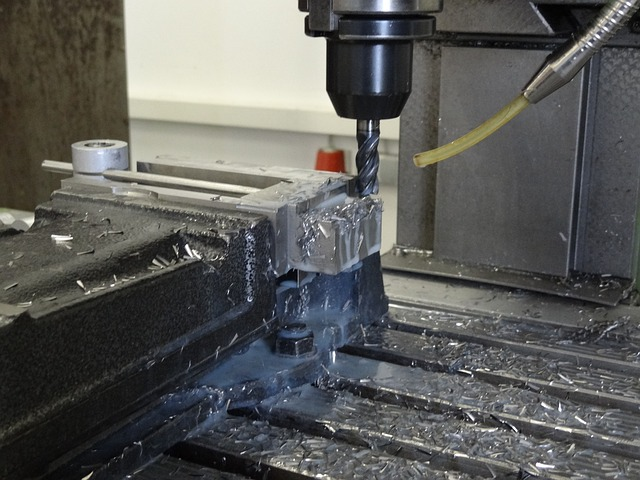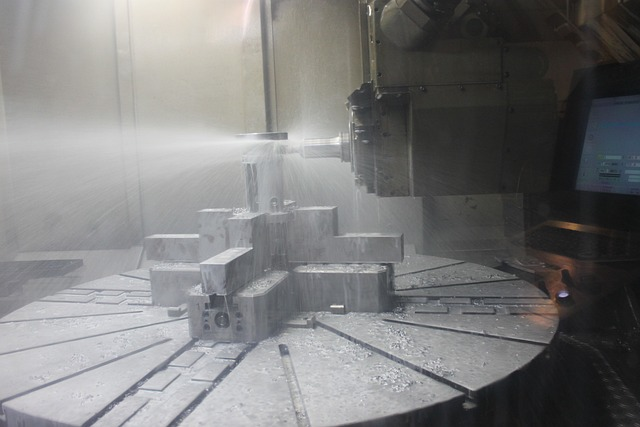CNC machining is the most common process for the manufacturing and design of complex machining parts. It creates intricate designs and patterns. Climb milling and conventional milling are the two techniques used by machinists for the creation and manufacturing of machining parts. However which technique is better for which material is a difficult trade off decision.
This blog is a complete guideline for machinists and engineers who want to make an informed decision about whether to choose climb milling or conventional milling for manufacturing purposes. It highlights advantages, disadvantages and a comparison between both processes. This blog assesses both processes from the aspect of different parameters.
Definition of Milling
Before understanding the concepts of conventional mill, and climb milling it is better to first know about milling. Milling is a subtractive method of manufacturing. When a rotating tool moves on the surface of a flat surface and does cutting the process is known as milling.
Climb milling and conventional milling are two ways to perform the milling process. They are both different than each other. Understanding them thoroughly will help machinist and engineers make the right machining decisions.
What’s Climb Milling?
The cutting process in which both the cutting tool and the flat surface rotate in the same direction is known as climb milling. This cutting process is also known as down milling. During climb milling the teeth of the cutting tool climb onto the surface beneath the workpiece, hence the name.
The chip formation in climb milling is also very interesting. During the initial stage of the process the chip width is higher and it is thicker. As the process progresses the chip becomes thinner.
Machinists prefer the climb milling process because the chances of recutting are almost near to zero. This is also a major advantage of the climb milling process.

What Is Conventional Milling?
Although the preferred way for most of the machinists and engineers is climb milling yet in some cases the use of conventional milling becomes mandatory. During the cutting process the cutting tool faces backlash. The climb milling backlash occurs when the tool is experiencing backlash beyond its capacity.
The cutting tool should have the ability to counteract the backlash otherwise it may face breakage. It can also cause a potential injury because of a shrapnel. Therefore, for manual machines that have the backlash are prohibited.
For such unique circumstances conventional milling process is used. Conventional milling process is almost same in procedure to climb milling. The main difference between the two is that it moves in the upward direction as compared to the downward direction in climb milling.

Advantages of Climb Milling
Tool Life
In case of climb milling the cutting tool does not have to face much stress. The level of heat generated is low. Also, the tool deflection is low in this process. This causes a reduction in the tool wear. The tool life is increased by a percentage of fifty percent as compared to that of conventional milling. The longer tool life has better service life.
Surface Finish
We have discussed before that the thickness of the chip in a climb cut and milling decreases with the progress in the process. This is a major advantage of climb milling. This causes less tool deflection. The extracted chip tends to deposit behind the cutter. This eliminates the possibility of recutting. Therefore, guaranteeing a wonderful surface finish.
Less Heat generated and Simpler Work holding
The gradual reduction in the chip width with the process progress has many benefits. One of the benefits is that it causes a reduction in the heat generated. During horizontal milling process the cutting force is in downward direction. This causes a reduction in the cutting load. It also leads to proper workpiece handling.
The downward exertion of force keeps both the workpiece and the cutting tool intact. This causes a reduction in the machining chatter.
Disadvantages of Climb Milling
Apart from several advantages there are some drawbacks associated with climb milling as well. Some of them are listed below:
Increased Vibrations
In cutter in climb milling exerts a very strong force on the workpiece. The downward force of the cutter causes the table or the object holding the workpiece and the workpiece itself to exert a reactive force. This force in reaction is known as “backlash”.
Therefore, the force and the backlash can sometimes be so strong that it can result in breakage of the table. This can also result in injuries to the person operating the tool.
The possibility of backlash is especially high when the cutting tool is operating at a very high tendency. However, these days the potential of backlash is near to zero. It is because of the use of backlash eliminating tools in the market. These tools reduce backlash and enhance the positive impacts of the climb milling procedure.
Not recommended for Hard Materials
Climb milling is not a favorable technique for use on hard materials. Chip thickness is the main reason behind it. In the initial stage of the process chip thickness is highest. It becomes thinner with the progress of the process.
During application on hard materials the probability of tool breakage increases. This is especially true when tools are made up of materials like titanium, steel and cast iron.
Chances of Breakage due to Backlash
The harm of breakage is not only limited to the tool holding the cutter. It also impacts the workpiece on which the cutter is being used. When operating at a high capacity the backlash can cause string exertion of forces even on the workpiece. As a result of these cutter forces the workpiece can break.
Less Accuracy
The backlash and string vibrations can cause deflections in the cutting tools as well. These affects cutting accuracy too. This also has a negative impact on the cutting tool’s accuracy. As the cutting tool rotates the resulting deflection affects surface finish. Not just the surface finish but it also impacts the result.
Advantages and Disadvantages of Conventional Milling
Conventional milling has several advantages. It does have certain limitations as well. To optimize the use of this technique you should have knowledge of both.
Advantages
Best Technique for Micro milling
Micro milling is an advanced level milling style or technique. This milling style uses CNC milling machines and other tools with high calibrations. The purpose of this milling style is to obtain high level of accuracy and creation of intricate patterns and designs.
When using milling machines in micro milling the tool deflection is at its maximum. Therefore, in such cases selecting conventional milling machine is the best option. Among the two milling methods i.e. conventional milling and climb milling, conventional milling produces less tool deflections.
No Backlash
This is probably the best advantage of conventional milling. The absence of backlash in case of conventional milling is because of force is carried upward. This does not cause backlash in the machine table and therefore no vibrations or deflections.
Optimal Control
A condition of dynamic system that satisfy design objectives is known as optimal control tool diameter. This is another great advantage of the conventional milling process. Since the force is in upward direction and conventional milling has zero tool deflection effects the chances of producing unexpected cut is in the workpiece are minimum.
Even if accidentally the operator does a cut in the workpiece its depth is negligible. It does not produce any visible effect on the appearance of the workpiece. It is all because of the optimal control which conventional milling provides to the operator over the cutting tool.
Stable Operations
During climb milling operation the operator exerts force through the cutting tool in the downward direction. During these operations the cutting tools exerts a force in the opposite direction towards the operator. However, in case of conventional milling the case is opposite.
While using the conventional machining both the operator and the conventional cutting tool operate in the downward direction. Along with optimal control it makes the whole conventional milling process more stable. This reduces the chance of inaccuracy and damages as well.
Disadvantages
Rough Finishing
As you know that in conventional milling the cutter geometry forces operate in the opposite direction i.e. upward. This makes the achievement of smoot finish impossible. Both the cutting force of the cutter and the deflection in both the cutter and the workpiece cause rough surface finish.
It is these deflections that make conventional milling a preferred process for hard materials. Hard materials include cast iron and steel.
Excessive Heat Generation
The gradual chip formation in the conventional milling process. This causes overheating of the cutting tool since the tool has to rotate for longer periods of time. Overheating not only damages the tool but also affects tool life. It actually reduces the tool life.
Damage to the Tool
The decrease in the tool life comes with many other disadvantages as well. Not only it damages the tool because of excessive heat generation but it also impacts the accuracy surface quality of the results produced.
The Climb vs Conventional Milling Debate
Now that we have gained in depth knowledge of both climb milling and conventional milling it is important to focus on the differences between the two. For some purposes climb milling is a better option and for others conventional milling.
But which technique is important for what situations needs better understanding. This part focusses on the suitability of both techniques. Here we shall pay attention to the climb mill, vs conventional milling debate.
Rough Materials
For rough and harder materials consider conventional milling. However, in case of harder objects try making the final cut using climb milling. It is because climb milling produces smooth surface finish as compared to the conventional cut milling that produces a rough surface finish.
Manual machines
When you are using manual machines, it is always better to use conventional milling. Conventional milling requires force in the upward direction providing more optimal control to the operator. optimal control is a top priority when using manual machining therefore in that climb milling vs conventional milling debate conventional milling wins this debate.
However, in case you are using traditional approach of working with traditional machines than you should use a backlash eliminator. It is because in that case there is a possibility of deflections.
Tool Deflection and Cut Accuracy
Considering the climb milling vs. conventional mill finish pass debate tool deflection and cut accuracy are two very important factors. The deflection force vector in case of conventional milling is parallel to the cut. This indicates an exertion of high cutting forces.
In case of climb milling the deflection, force vector is perpendicular to the cut. In both cases there are chances of error. The vector lengths in case of climb cutting and of conventional milling are also longer. Longer lengths indicate the possibility of deflection as well. It is also because of heavy cutting forces.
Therefore, for roughing purposes you should choose climb milling. Because in this case tool deflection does not impact accuracy of the process. Also, it helps you to rough faster.
The reason behind fast roughing is that the transition of chip from thick to thin causes less heat generation. Also, the cutting forces are lighter.
Cutting Geometry
In the Cutting process tool geometry plays a vital role. However, in certain cases climb mill might produce negative cutting geometry.
- When cutting if the is equivalent to half the cutter diameter than choose climb milling. In this case we assume that the machine has less or no backlash.
- The choice between climb vs conventional milling does not matter when you are cutting till 3/4th of cutter diameter.
- You should prefer conventional milling when you pass 3/4 1x to the cutter diameter.
Material Compositions
Material compositions are very important in enable climb milling vs conventional debate. Both techniques have different suitabilities for different materials. Aluminum, acrylic, polycarbonate etc. are among the category of soft materials. Therefore, they use climb milling.
Hard materials such as cast iron and steel require the implementation of conventional milling.
Conclusion
Both climb milling and conventional milling are complex technical processes. Having better understanding of both in terms of parameters such as tool deflection, heat generation and suitability to different materials is important.
For micro milling conventional milling is a better option. However, for obtaining smooth finish pass climb milling is preferred. In certain situations, both processes can be used one after the other.

